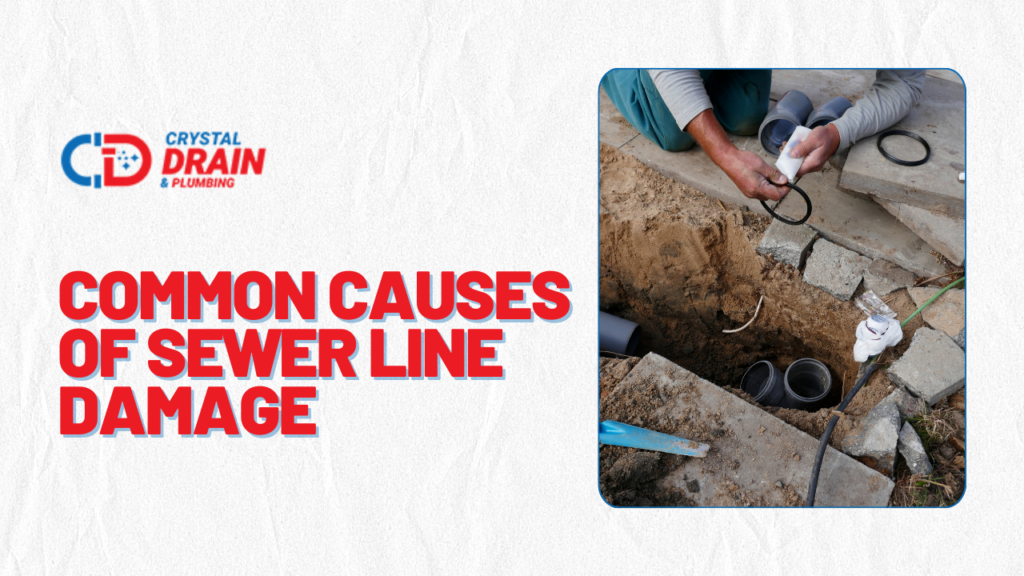Common Causes of Sewer Line Damage in Toronto and How to Prevent Them

Sewer lines play a crucial role in keeping your home’s plumbing system running smoothly, but they can also be vulnerable to damage over time. In Toronto, factors like aging infrastructure, tree roots, and harsh weather can lead to serious issues with your sewer system. In this article, we’ll break down the common causes of sewer line damage and provide practical tips to help prevent costly repairs.
Key Takeaways
- Tree roots, aging pipes, ground movement, and heavy rain are the most common causes of sewer line damage in Toronto.
- Regular inspections and preventive maintenance are key to avoiding costly repairs.
- Modernizing old pipes, managing tree roots, and being mindful of what you flush can significantly extend the life of your sewer line.
- Consider trenchless sewer repair to fix problems with minimal disruption to your property.
By taking proactive steps, you can prevent unexpected issues with your sewer system and avoid costly repairs down the road.
Factors Influencing Backwater Valve Costs

What Happens?
Tree roots naturally grow toward sources of water, and your sewer line offers plenty of it. Over time, roots can enter tiny cracks in the pipe, causing blockages and, eventually, more severe damage like leaks or pipe breaks.
How to Prevent It:
- Schedule regular sewer inspections, especially if you have large trees near your home.
- Consider planting trees with non-invasive root systems or installing root barriers.
- Use a root-killing solution if tree roots are detected in your sewer line to prevent further growth.
2. Aging Pipes
What Happens?
Many homes in Toronto, particularly older ones, have sewer lines made of materials like clay, cast iron, or lead. Over time, these materials can corrode, crack, or collapse, leading to major plumbing issues.
How to Prevent It:
- If your home is older, schedule a sewer line inspection to check the condition of your pipes.
- Upgrade your pipes to modern materials like PVC, which are more durable and resistant to corrosion.
3. Ground Shifting and Soil Movement
What Happens?
Toronto’s weather, especially during the freeze-thaw cycles in winter, can cause the soil to shift. This movement can put pressure on your sewer lines, leading to cracks or misaligned pipes.
How to Prevent It:
- Ensure your sewer line is installed with flexible pipe joints that can handle minor ground shifts.
- Perform regular inspections, especially after winter, to detect any movement or damage to the pipes.
4. Flushing Non-Flushable Items
What Happens?
Flushing items like wet wipes, paper towels, feminine hygiene products, and grease down the drain can create blockages that put excessive pressure on your sewer line. This pressure can lead to cracks, backups, and even pipe bursts.
How to Prevent It:
- Only flush toilet paper and human waste down the toilet.
- Never pour grease or oil down the sink; instead, dispose of it in the trash.
- Install drain screens to prevent large debris from entering your plumbing system.
5. Heavy Rainfall and Flooding
What Happens?
Toronto is no stranger to heavy rainstorms, which can overwhelm drainage systems and increase water pressure in sewer lines. When the pressure becomes too much, it can lead to pipe damage or cause sewage to back up into your home.
How to Prevent It:
- Ensure your eavestroughs and downspouts are clear and direct water away from your foundation.
- Consider installing a backwater valve to prevent sewage from backing up into your home during storms.
Keep your storm drains clear to help manage excess rainwater.

6. Poor Installation or Lack of Maintenance
What Happens?
Improper installation of sewer lines can cause misalignment or poor connections, leading to long-term problems. Failing to maintain your sewer system regularly can also allow small issues to turn into larger, more expensive repairs.
How to Prevent It:
- Always hire a licensed, experienced plumber for sewer line installations and repairs.
- Schedule annual sewer inspections to catch potential problems early before they escalate.
FAQs About Causes of Basement Flooding
Look out for frequent clogs, slow drains, bad odors, or water pooling in your yard. Any of these could indicate a sewer line problem that needs professional attention.
It’s recommended to have your sewer line inspected every 1-2 years, especially if your home is older or you have large trees nearby.
Yes, you can install root barriers, choose trees with non-invasive roots, or use a chemical root killer to stop roots from growing into your sewer pipes.
Trenchless sewer repair is less invasive, faster, and often more cost-effective than traditional methods that require digging up your yard. It can repair or replace pipes without extensive excavation.
Many standard insurance policies don’t cover sewer line repairs unless you have specific coverage for it. It’s best to check with your insurance provider.
Conclusion
Sewer line damage is not only inconvenient but can also be costly to repair if not addressed promptly. Understanding the common causes of sewer line damage in Toronto—such as tree root intrusion, aging pipes, and ground shifting—can help you take preventative measures to protect your home. Regular maintenance, proper disposal habits, and timely inspections can extend the life of your sewer system and prevent major disruptions.
If you’re experiencing sewer line issues or want to schedule a routine inspection, Crystal Drain & Plumbing is here to help. Our expert team offers comprehensive sewer line repair and maintenance services across Toronto. Contact us today to learn more!
